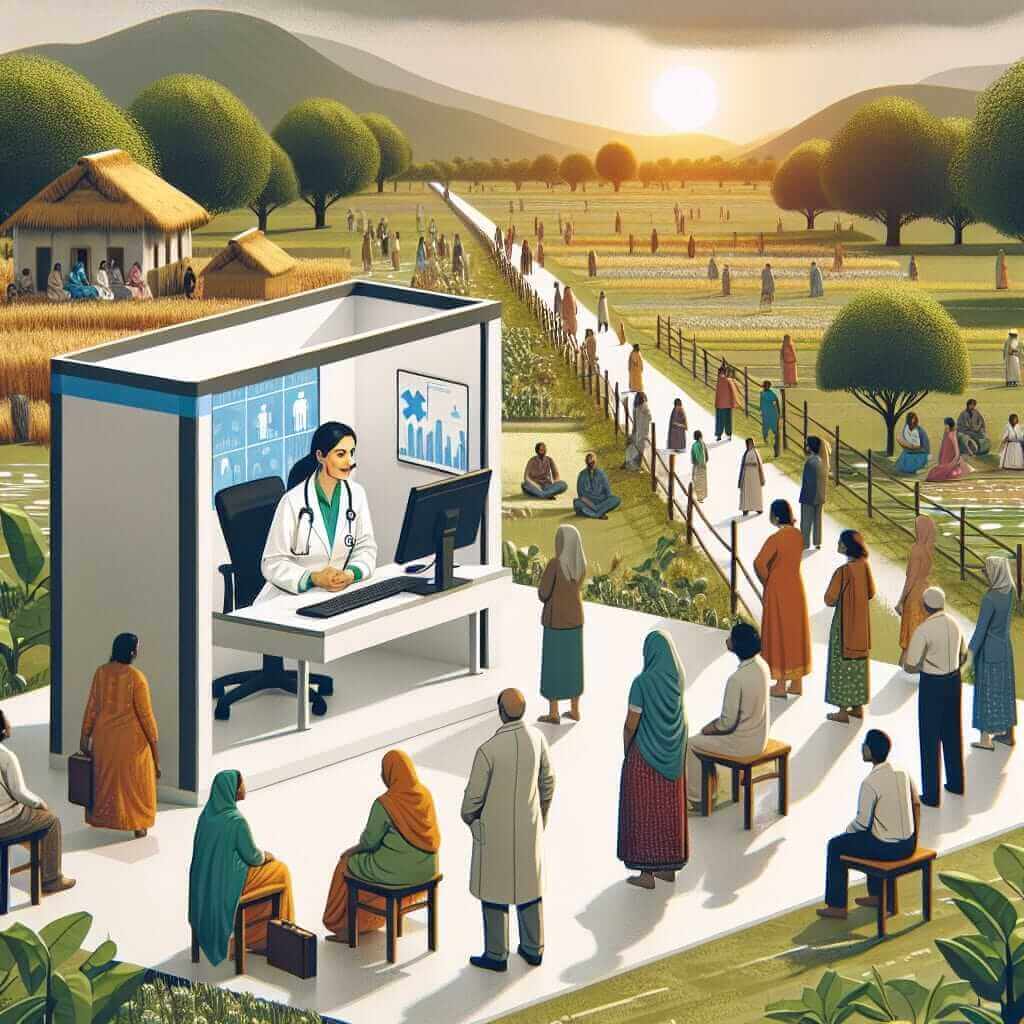As an IELTS Reading instructor with over 20 years of experience, I have seen various topics repeatedly appear in the IELTS exams. One such topic is the impact of advancements in technology on healthcare, specifically telemedicine. The social impacts of telemedicine on rural healthcare have become significant with technological progress and are thus a probable topic for future IELTS Reading exams. This article will provide a sample reading passage, questions, and answers to help you practice for your IELTS Reading test.
Telemedicine, by definition, involves the delivery of healthcare services through remote telecommunications. This development has been particularly transformative for rural healthcare, offering benefits such as increased access to medical services and improved patient outcomes. However, it also raises concerns about the digital divide and the quality of care provided remotely.
Practice Reading Passage
Telemedicine: Closing Gaps in Rural Healthcare
Telemedicine has revolutionized the way healthcare is delivered, especially in rural areas where access to medical services is often limited. By facilitating remote consultations, electronic health records, and diagnostic services, telemedicine has brought significant changes and improvements to healthcare provision in rural settings.
One of the crucial social impacts of telemedicine is increased access to healthcare. Rural populations, who often face long distances and travel time to reach medical facilities, now benefit from virtual consultations with specialists. This accessibility improves diagnosis and treatment, reducing the need for costly and time-consuming journeys.
Another noteworthy impact is the enhancement of patient outcomes. Through continuous remote monitoring and follow-up care, patients receive timely interventions, which are particularly crucial for managing chronic diseases. Telemedicine allows for the adjustment of treatment plans without requiring in-person visits, thereby ensuring patients receive continuous and efficient care.
Moreover, telemedicine has strengthened the capacity of rural healthcare providers. By connecting them with specialists in urban centers, local doctors receive guidance and support, enhancing their diagnostic and treatment capabilities. This collaboration fosters professional development and contributes to higher standards of care within rural clinics.
However, the proliferation of telemedicine is not without challenges. The digital divide remains a significant barrier, with inadequate internet connectivity in many rural areas limiting the effectiveness of telemedicine services. Furthermore, there are concerns about data privacy and the security of electronic health records, which are crucial to maintaining patient trust in remote healthcare solutions.
In conclusion, telemedicine holds the promise of bridging healthcare gaps in rural areas by offering improved access to services and better patient outcomes. Yet, addressing the challenges of digital infrastructure and data security is essential for realizing its full potential.

Practice Questions
Multiple Choice
-
What is one of the primary benefits of telemedicine mentioned in the text?
- A) Reduction of healthcare costs
- B) Improved travel efficiency for urban patients
- C) Increased access to healthcare for rural populations
- D) Enhanced interaction between patients in urban and rural areas
-
Why are continuous remote monitoring and follow-up care beneficial for patients?
- A) They reduce the social stigma associated with certain diseases.
- B) They ensure timely interventions and efficient management of chronic diseases.
- C) They help healthcare providers reduce their workload.
- D) They are cheaper than traditional in-person visits.
-
What challenge is associated with the implementation of telemedicine in rural areas?
- A) Increased travel time
- B) Shortage of medical professionals
- C) Inadequate internet connectivity
- D) Overcrowding in clinics
Identifying Information (True/False/Not Given)
-
Telemedicine has only benefited patients in urban centers.
- True
- False
- Not Given
-
Security of electronic health records is mentioned as a concern in the text.
- True
- False
- Not Given
-
Local doctors in rural areas often refuse to use telemedicine technology.
- True
- False
- Not Given
Answer Keys
Multiple Choice
- C) Increased access to healthcare for rural populations
- B) They ensure timely interventions and efficient management of chronic diseases.
- C) Inadequate internet connectivity
Identifying Information (True/False/Not Given)
- False
- True
- Not Given
Common Mistakes and Tips
When preparing for the IELTS Reading test:
- Overlooking Keywords: Candidates often miss critical keywords that can change the meaning of a question. Practice skimming and scanning to spot these keywords.
- Time Management: Allocate time wisely across the sections and do not spend too much time on a single question.
- Assumptions: Avoid making assumptions beyond the information presented in the text. Stick strictly to the details given.
Vocabulary
- Telecommunications (noun): /ˌtɛlɪˌkəˈmjuːnɪkeɪʃənz/ – Communication over a distance by cable, telegraph, telephone, or broadcasting.
- Proliferation (noun): /prəˌlɪfəˈreɪʃən/ – Rapid increase in the number or amount of something.
- Intervention (noun): /ˌɪntərˈvɛnʃən/ – The action or process of intervening.
Grammar Focus
Reduced Relative Clauses:
- Original: “Rural populations, who often face long distances and travel time to reach medical facilities…”
- Reduced: “Rural populations, often facing long distances and travel time to reach medical facilities…”
Practicing and mastering the usage of reduced relative clauses can make your writing more concise and effective.
Conclusion
Achieving a high score in the IELTS Reading test is a combination of comprehension, vocabulary, and time management. By using the provided practice materials and focusing on the discussed strategies, you can improve your performance and confidence in the IELTS Reading section. Keep practicing, and incorporate these tips into your study routine for the best results.